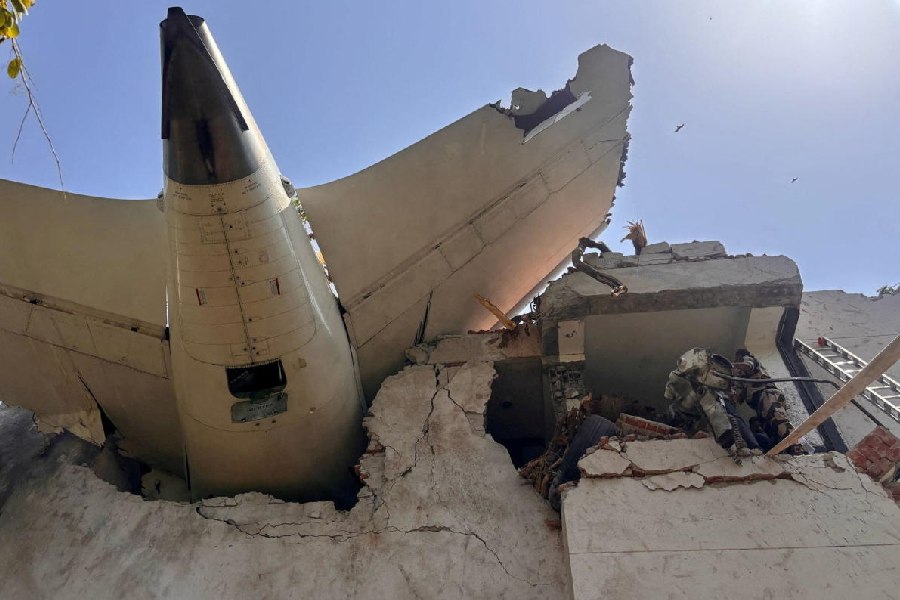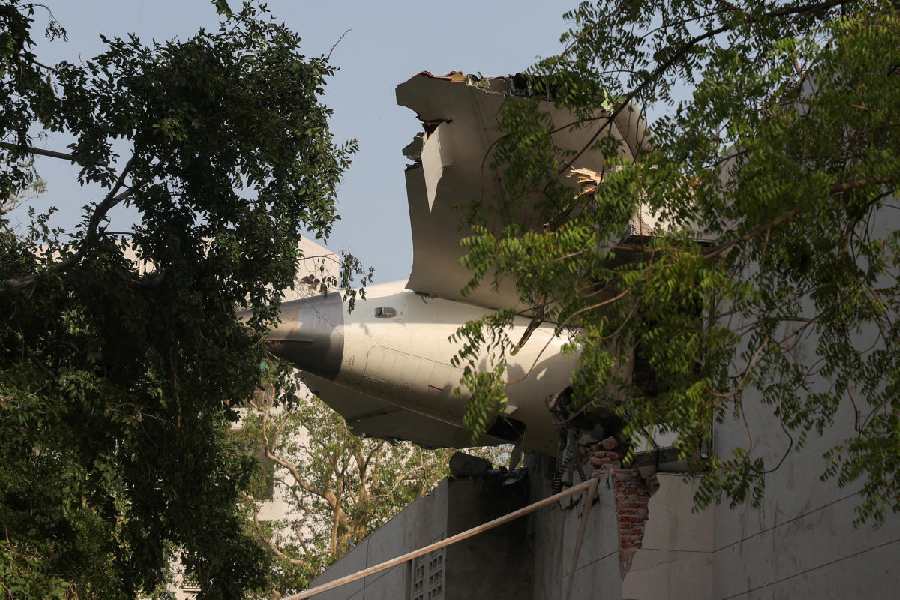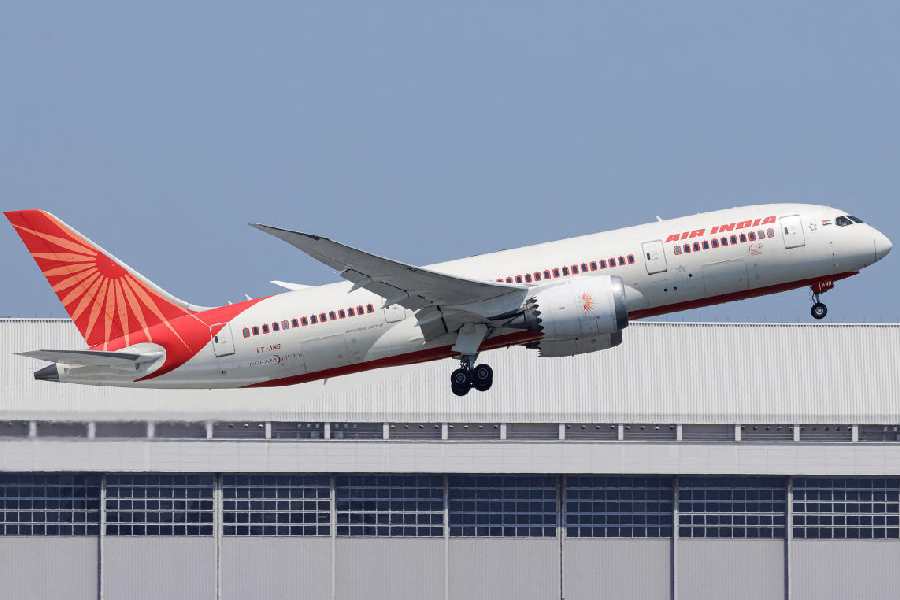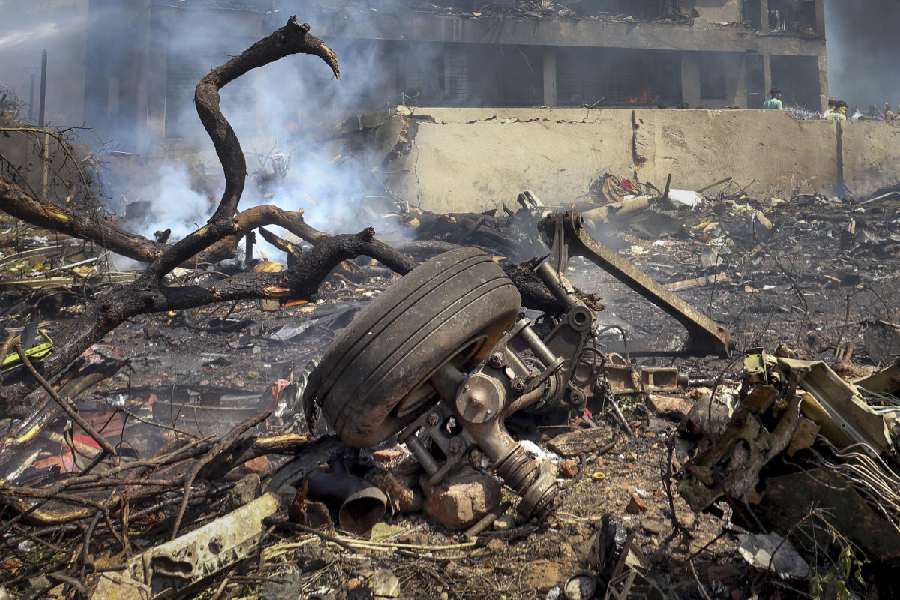 |
| Kanak Gogoi examines the rumble-strip. Picture by Eastern Projections |
Guwahati, Aug. 10: It is not known whether anybody keeps count of the vehicles that flit in and out of the heavily guarded entrance to the new Assam secretariat on any given day.
The more the merrier, the government would probably say after installing an award-winning innovator’s rumble-strip power-generator at that very site. The device produces power from friction and minister Pradyut Bordoloi cannot wait to start this unique experiment where it matters: the seat of power.
If successful, Kanak Gogoi’s gadget will become the model for future power projects in a state starved of electricity for most of the year. “This can change the power scenario in Assam,” the power minister said, indicating the government’s seriousness about the pilot project.
The secretariat was chosen because it fulfils both the requirements of Gogoi’s power generator — speedbreakers and a constant stream of vehicles.
The contraption has already passed a test conducted in the home of technology, IIT Guwahati. Prof. A.K. Das of the institute’s design department said it was cost effective and easy to operate. Trials showed that friction caused by a single vehicle crossing a rumble strip could produce approximately 0.9kW of power.
“The device can be commercially viable if multiple strips are installed in a place where there is continuous flow of vehicles. Since there is no expenditure involved except that of installation, the cost of production of electricity will be one-fifth of what it is for power generation from hydel or thermal sources,” Das said.
Installation of multiple rumble strips in one spot will entail an estimated expenditure of Rs 20 lakh. Continuous flow of traffic and storage of electricity generated from the movement of vehicles over the strips will ensure a steady flow of power to the buildings at the site.
Experts at IIT have pegged the cost of installing such a device with a power-generation capacity of 1 MW at around Rs 1 crore. Installation of machinery for the same amount of thermal and hydropower will cost around Rs 8 crore.
Gogoi, a businessman with a passion and flair for innovation, developed the prototype for trials by welding together a five-metre speedbreaker with three identical and moveable metal plates in the middle instead of the conventional bitumen and stone-chip rumble strip.
Resting on a hydraulic system, the plates move down when a vehicle crosses and bounce back to their original position when the weight eases. As the plates come down, they crank a lever fitted to a wheel-type mechanism. This rotates a geared shaft and the resultant output of energy is routed to a dynamo to generate electricity.
Gogoi said his contraption was based on the basic principle of converting potential energy into kinetic energy to produce electricity.
The prototype designed for the pilot project has the capacity to generate 15kW to 20kW of electricity with the help of five rumble strips.
Jatindra Nath Bora, a former chairman of the Assam State Electricity Board, described the rumble-strip method as “a good innovation” but said its efficacy would be known only after prolonged use.
Nearly 300 vehicles, including police vehicles and pilot cars of VIPs, pass through the secretariat gate. The same vehicles go in and out several times during the day. Gogoi’s gadget should be able to produce around 270kW daily, adequate for a capital complex that requires between 200kW and 250kW.










